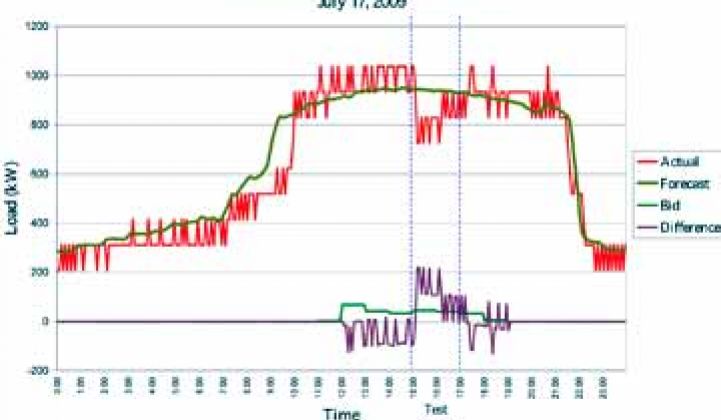Automated demand response has been maturing lately, with a variety of companies flocking to the standard that has grown out of Lawrence Berkeley National Laboratory, known as Open Automated Demand Response or OpenADR. The standard is now coming into its own with the recent announcement of the OpenADR Alliance, a nonprofit corporation that will push for the adoption and compliance of the standard across the country.
The California-based standard, which has been adopted by more than 60 vendors, is looking to drop costs, improve reliability and increase compliance far outside of the Golden State. In 2009, the National Institute of Standards and Technology and the U.S. Department of Energy chose OpenADR for smart grid demand response communications over the internet, and national standards are coming. Beyond a bevy of startups, major players like Honeywell are supporting OpenADR, as well. Honeywell used an $11.4 million DOE grant to build an OpenADR system with Southern California Edison earlier this year; the building controls giant also acquired Akuacom, which provides demand response services to independent service providers and building owners using the OpenADR platform.
The new Alliance, which includes utilities, vendors, consumers and other stakeholders, is looking to drive down costs by adhering to the uniform standard. Most importantly, OpenADR offers an open source combination of control for customers and the automation to make demand response more attractive.
Traditional DR, which involves the transmission of signals through emails or sometimes phone calls, can be cumbersome for large commercial and industrial providers. However, fully automated DR takes away essential controls that many companies will not sacrifice. But companies like PowerIt, Akuacom, EnergyConnect and Tendril all offer the blend of specialization to keep businesses running with all of the advantages of demand response. For demand response to reach the 188 gigawatts (up from 37 GW in 2009) in peak demand reduction estimated by FERC, automation on some level will have to be widely adopted.
A one-stop shopping source for education, training, testing and certification for OpenADR could very well get the U.S. closer to the upper limits of DR's possible penetration level. California is implementing dynamic pricing tariffs that will surely accelerate the use of demand response, and utilities in other regions, such as NVEnergy and Bonneville Power Administration, have named OpenADR as their communications spec, according to Berkeley Lab.
In a recent editorial, Mike Zimmerman of BuildingIQ, a demand response company that uses weather data to optimize DR, argued that the application of OpenADR still needs to be fine-tuned to take into account the needs of customers (whether they are mechanical or comfort-related ), as well as to predict the actual load that will be shed on any given day. However, the advancement of OpenADR is, and will continue, to spur the innovation that will solve some of those problems.
Since the standard has already been vetted in California, it seems ripe to be adopted by many more utilities. Also, many vendors that are using OpenADR are not just about single-event planning. What's more, anything that gets -- and keeps -- companies involved in demand response and load shaping is likely to gain a lot of traction in coming years.



